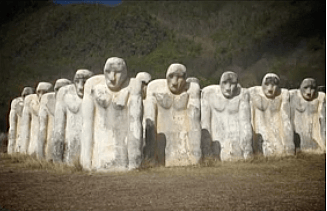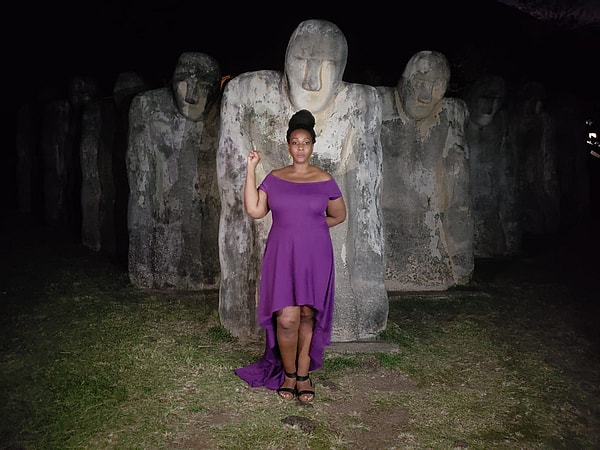[griojw id=”65ZHZ7xR” playerid=”GqX43ZoG”]
In the now infamous closing scene of Marvel’s “Black Panther” movie, Erik Killmonger played by the indomitable Michael B. Jordan, utters this line—
“Bury me in the ocean, with my ancestors that jumped from the ships, because they knew death was better than bondage.”
On a hilltop in the French West Indies, there are 20 magnificent statues facing the sea in eternal sorrow and gratitude, in a similar tribute to ancestors we tragically lost at sea— specifically those who never had a choice to live or die in slavery.
READ MORE: Slavery was just outlawed in Mauritania in 1981 and slavers today are still getting sent to prison
The Memorial De L’anse Caffard (or Anse Caffard Slave Memorial), is a towering exhibition on the island of Martinique, in memory of the 40 Africans who drowned after the Anse Cafard slave ship crashed into the Diamond Rock Mountain in 1830.
The 20 white stones are shaped in the image of people with their shoulders hunched down and eyes ahead to the ocean, honors the memories of these ancestors chained below the ship, taken from their homeland an entire 15 years after slavery was supposed to have been abolished.

It is a sobering reminder of the inhumanity of slavery, and the horrors our ancestors faced during the Trans-Atlantic slave trade.
As more and more black travelers earn passport stamps and make their way around the world to explore,the Memorial De L’anse Caffard is a must-see item to add to your destination bucket list.
READ MORE: A Day Late and Several Dollars Short: Charleston apologizes for its role in the slave trade
Not only is it near Diamant Beach, which means you can make another stop along the way, it also makes for an incredible learning opportunity — one that is even spiritual— as visitors can walk right up to the sculptures and feel them.

Some less-educated tourists have used this openness for an opportunity to get photo ops that don’t honor the significance of the memorial.
But for a black traveler equipped with knowledge, visiting the memorial will be a sacred moment that means so much more.
theGrio flew to Martinique and visited the monument to experience its power firsthand.
While the views of the beach and water are stunning during the daytime, consider going during sunset or early evening, as long as you travel with a group and take obvious safety precautions around the water’s edge.
READ MORE: 63 years ago, Rosa Parks took a seat at the forefront of history
At night you can see the stars shining, hear crickets chirping and waves crashing into the land, which makes the experience more solemn and moving.
Prepare to be overwhelmed by emotion, but also an appreciation that artists and historians kept the story of L’anse Caffard alive, when history may have tried to bury it.
To learn more about how to plan your own visit, check out Martinique’s main travel website at @MartiniqueMagnifique.

